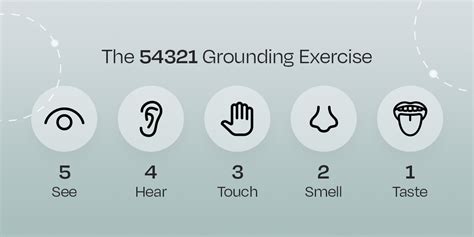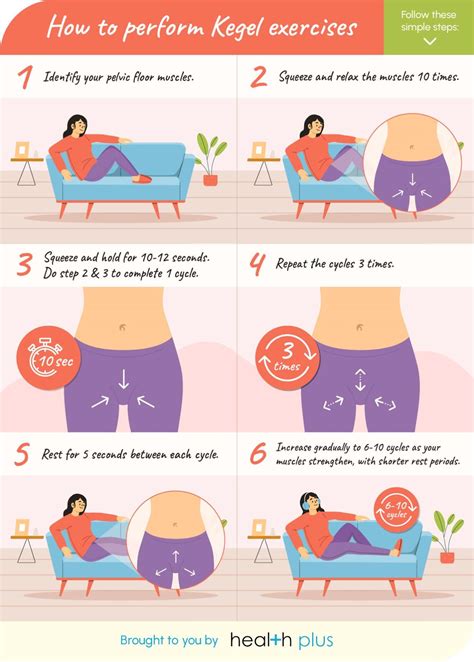Intro
Discover Kegel exercises benefits, including improved bladder control, enhanced pelvic floor strength, and boosted sexual health, with regular practice of these simple yet effective exercises.
The importance of maintaining a healthy pelvic floor cannot be overstated. For both men and women, the pelvic floor muscles play a crucial role in supporting the bladder, bowels, and reproductive organs. Weakness in these muscles can lead to a range of issues, including incontinence, prolapse, and sexual dysfunction. One of the most effective ways to strengthen the pelvic floor muscles is through Kegel exercises. These simple yet powerful exercises have been shown to have a significant impact on overall pelvic health, and can be practiced by anyone, regardless of age or fitness level.
Kegel exercises are named after Dr. Arnold Kegel, the gynecologist who first developed them in the 1940s. Initially intended to help women regain bladder control after childbirth, Kegel exercises have since been recognized as a valuable tool for maintaining pelvic health in both men and women. By strengthening the pelvic floor muscles, Kegel exercises can help to improve bladder control, enhance sexual function, and even alleviate symptoms of prolapse and other pelvic floor disorders. With regular practice, individuals can experience significant improvements in their overall pelvic health, leading to enhanced quality of life and reduced risk of related health issues.
The benefits of Kegel exercises extend far beyond the pelvic floor, with positive effects on overall physical and emotional well-being. By improving bladder control and reducing the risk of incontinence, individuals can enjoy greater confidence and freedom, without the worry of embarrassing accidents or limitations on daily activities. Additionally, the enhanced sexual function and pleasure that can result from regular Kegel practice can lead to stronger, more intimate relationships and a more fulfilling sex life. With their numerous benefits and ease of practice, it's no wonder that Kegel exercises have become a staple of pelvic health routines around the world.
Kegel Exercises for Women

Benefits for Women
Some of the key benefits of Kegel exercises for women include: * Improved bladder control and reduced risk of incontinence * Enhanced sexual function and pleasure * Reduced risk of prolapse and other pelvic floor disorders * Improved overall pelvic health and reduced risk of related health issues * Enhanced confidence and freedom, without the worry of embarrassing accidents or limitations on daily activitiesKegel Exercises for Men

Benefits for Men
Some of the key benefits of Kegel exercises for men include: * Improved bladder control and reduced risk of incontinence * Enhanced sexual function and pleasure * Reduced risk of prostate issues, such as prostatitis and BPH * Improved overall pelvic health and reduced risk of related health issues * Enhanced confidence and freedom, without the worry of embarrassing accidents or limitations on daily activitiesHow to Do Kegel Exercises

Steps to Follow
Here are the steps to follow for practicing Kegel exercises: 1. Identify the pelvic floor muscles by stopping the flow of urine mid-stream. 2. Contract the muscles, holding for 5-10 seconds. 3. Release the muscles, holding for 10-15 seconds. 4. Repeat the process, gradually increasing the length and intensity of your contractions. 5. Practice regularly, aiming for 10-20 repetitions per session, 2-3 times per day.Tips for Effective Kegel Practice

Additional Tips
Some additional tips for effective Kegel practice include: * Practice during daily activities, such as while brushing your teeth or waiting in line. * Use a Kegel exercise device or app to help guide your practice and track your progress. * Incorporate Kegel exercises into your existing workout routine, such as during yoga or Pilates practice. * Be patient and persistent, as it may take several weeks or months to notice significant improvements in pelvic floor strength and function.Common Mistakes to Avoid

Mistakes to Watch Out For
Some common mistakes to watch out for when practicing Kegel exercises include: * Using the wrong muscles, such as the abdominal or gluteal muscles. * Not practicing regularly, which can limit the effectiveness of the exercises. * Experiencing discomfort or pain while practicing, which can be a sign of underlying pelvic floor issues. * Not incorporating Kegel exercises into daily activities, which can make practice feel more like a chore.Conclusion and Next Steps

We invite you to share your thoughts and experiences with Kegel exercises in the comments below. Have you practiced Kegel exercises before? What benefits have you experienced? Do you have any questions or concerns about getting started with Kegel exercises? Let us know, and we'll do our best to provide helpful guidance and support.
What are Kegel exercises and how do they work?
+Kegel exercises are a type of pelvic floor exercise that targets the muscles of the pelvic floor, helping to strengthen and tone them. By contracting and releasing these muscles, individuals can improve bladder control, enhance sexual function, and reduce the risk of related health issues.
How often should I practice Kegel exercises?
+It's recommended to practice Kegel exercises 2-3 times per day, with 10-20 repetitions per session. Consistency is key when it comes to strengthening the pelvic floor muscles, so aim to make Kegel exercises a regular part of your daily routine.
Can Kegel exercises help with incontinence and other pelvic floor issues?
+Yes, Kegel exercises can be highly effective in helping to manage incontinence and other pelvic floor issues, such as prolapse and erectile dysfunction. By strengthening the pelvic floor muscles, individuals can improve bladder control, reduce symptoms, and enhance overall pelvic health.
